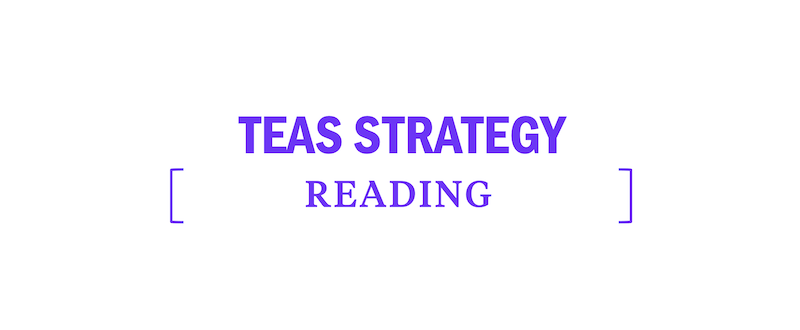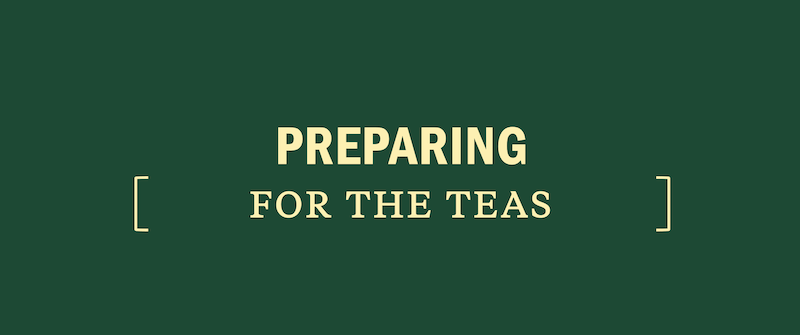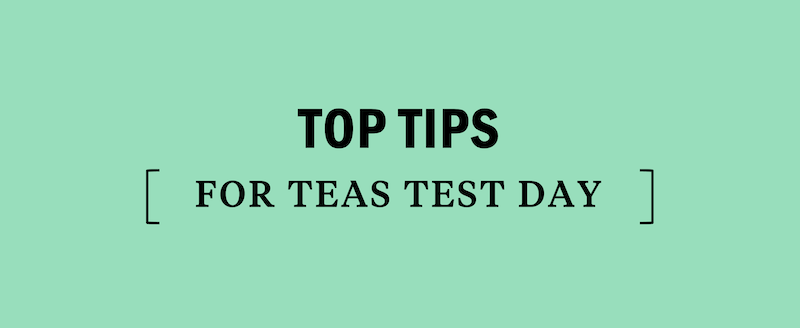TEAS Reading: How to Read Strategically
Of the 47 scored questions on TEAS Reading, 22 (47%) will ask you to identify key ideas and details from the passage. With these questions, the TEAS tests your ability to read for the “big picture” and for important details, as well as to draw inferences from your reading and apply what you learn from the text.
Key ideas and details questions make up nearly half of all Reading content questions you’ll see on the TEAS. Here’s what TEAS Reading looks like broken down by question type:
- Key ideas and details questions: 47%
- Craft and structure questions: 30%
- Integration of knowledge and ideas questions: 23%
By mastering strategic reading skills, you can learn how to quickly identify the author’s main idea and supporting details. We’ll discuss how to identify key ideas and details questions, and show you how you can read strategically to score points.
[ RELATED: What’s Tested on the TEAS? ]
TEAS Reading: Main Idea
Many TEAS questions ask you to identify the main idea, which is the subject the author is writing about or the point he or she is making in the stimulus. You can identify the main idea by asking yourself, “What does the author want me to know?” You should also ask, “Why does the author want me to know it?” Sometimes the writer will be simply describing or explaining a topic, and other times the author will be trying to persuade you of a particular point of view.
The correct answer to a question about the main idea, topic, or author’s primary purpose is broad enough to reflect the entire stimulus, but not so broad that it goes beyond the author’s point. For these question types, eliminate answer choices that are supporting details; these answers are too narrow.
TEAS Reading: Supporting Details
Other questions ask about details the author includes to support the main idea. Details are explicitly stated in the stimulus, and important details in passages—the kind of details you are likely to see a question about—are usually indicated by keywords indicating contrast, emphasis, or a sequence.
When reading a passage, keep an eye out for the following keywords, which likely indicate an important detail:
- Contrast keywords, such as “however” and “on the other hand,” which signal a different idea or example
- Emphasis keywords, such as “especially” & “surprisingly,” which signal a fact or idea the author thinks is important
- Sequence keywords—like “first,” “second,” or “third”—indicate a sequence of events or steps
The Kaplan Method for TEAS Reading
Reading on the TEAS requires a strategic approach. Following the Kaplan Method for Reading helps you get the correct answer efficiently, without wasting time.
Reading Strategically on the TEAS: Example
Now that you are clear on how to identify the author’s main idea and how to keep an eye out for supporting details, follow along as a TEAS expert answers a main idea question and a supporting detail question following the Kaplan Method for Reading.
“Like most superheroes, the Incredible Hulk possesses supernatural abilities. Among other talents, he has unlimited strength and the ability to leap several miles. Though theoretically capable of great evil, he is on the side of good, an especially important position given the time in which he first appeared in Marvel comics. First created at the height of post–World War II paranoia about nuclear war, the Incredible Hulk stories offer a fascinating look at the dual nature of human beings. On the one hand, he is a mild-mannered, bespectacled scientist. On the other, he is a raging, rampaging beast. More than a statement about the dangers of the Atomic Age, the Hulk is a reflection of the two sides in each of us—the calm, logical human and the raging animal.”

Here is a test expert’s approach to a supporting detail question.
Check out our section-by-section TEAS breakdowns:




